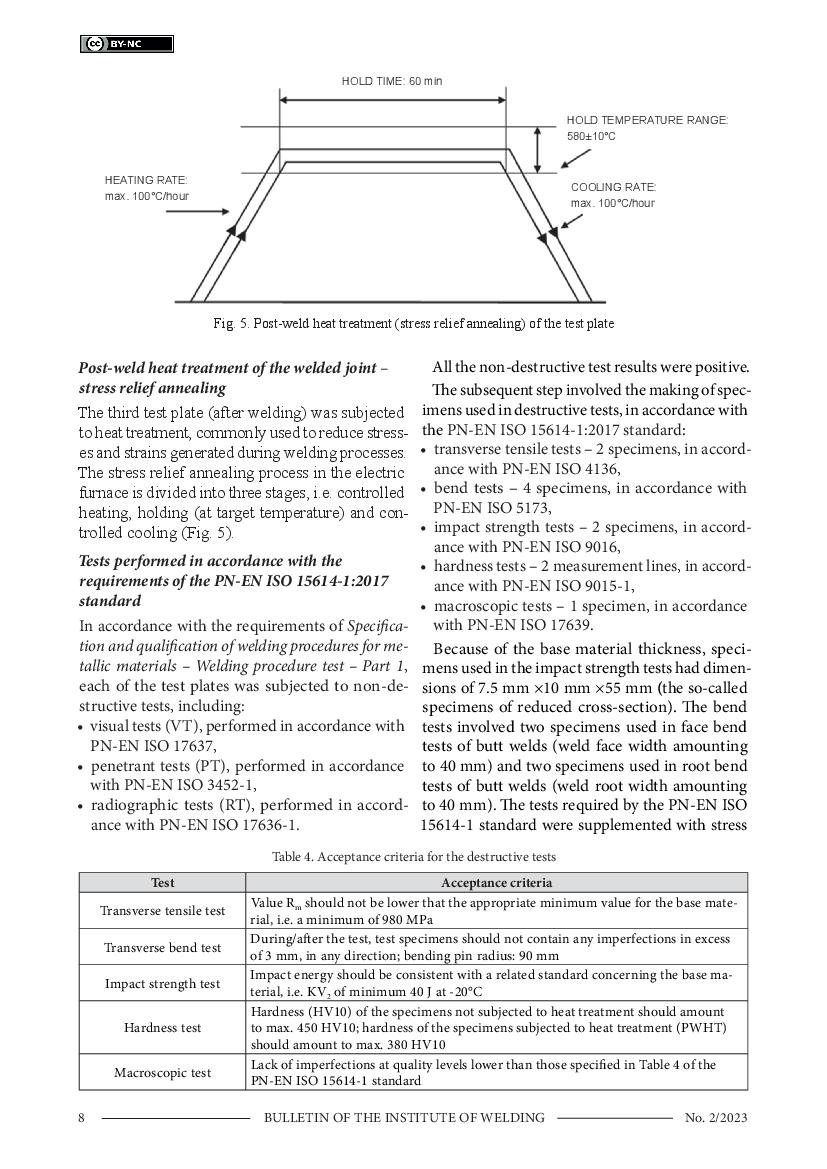The Effect of High-Frequency Peening on Properties of MAG-Welded Joints Made of Steel S960QL
The study discussed in the article aimed to analyse the effect of the peening of each bead on properties of butt joints made of steel S960QL and welded using the robotic MAG welding method (135) and a ceramic backing strip. In addition, the objective of the study was to identify the effect of the peening treatment on the level of stresses. The analysis involved the comparison of three butt joints in the post-weld state (i.e. only after welding), subjected to peening (preceded by welding) and to post-weld heat treatment (stress relief annealing). The purpose of the high-frequency peening (90 Hz) of each bead was to reduce stresses in the welded joint by introducing tensile stresses into the latter. The study-related tests involved the use of a Weld Line 10 air hammer (PITEC GmBH). The tests required by the EN ISO 15614-1 standard were supplemented with measurements of stresses involving the use of the Barkhausen effect (based on a testing procedure proposed by the technology provider, i.e. the NNT company). The tests revealed that the performance of high-frequency peening following the making of each bead did not lead to the obtainment of negative results of all the tests required during welding procedure qualification concerning the plate made of steel S960QL (in comparison with test plates after welding and stress relief annealing). The interpass peening of the weld face and that of the HAZ reduced post-weld residual stresses at a distance of 15 mm away from the joint axis (in comparison with stresses measured in the specimens after welding). The test results justified the positive assessment of peening in respect of tensile stress reduction in the fusion line area and in the HAZ.
DOI: 10.17729/ebis.2023.2/1
 1 / 9
1 / 9
 2 & 3 / 9
2 & 3 / 9
 4 & 5 / 9
4 & 5 / 9
 6 & 7 / 9
6 & 7 / 9
 8 & 9 / 9
8 & 9 / 9










